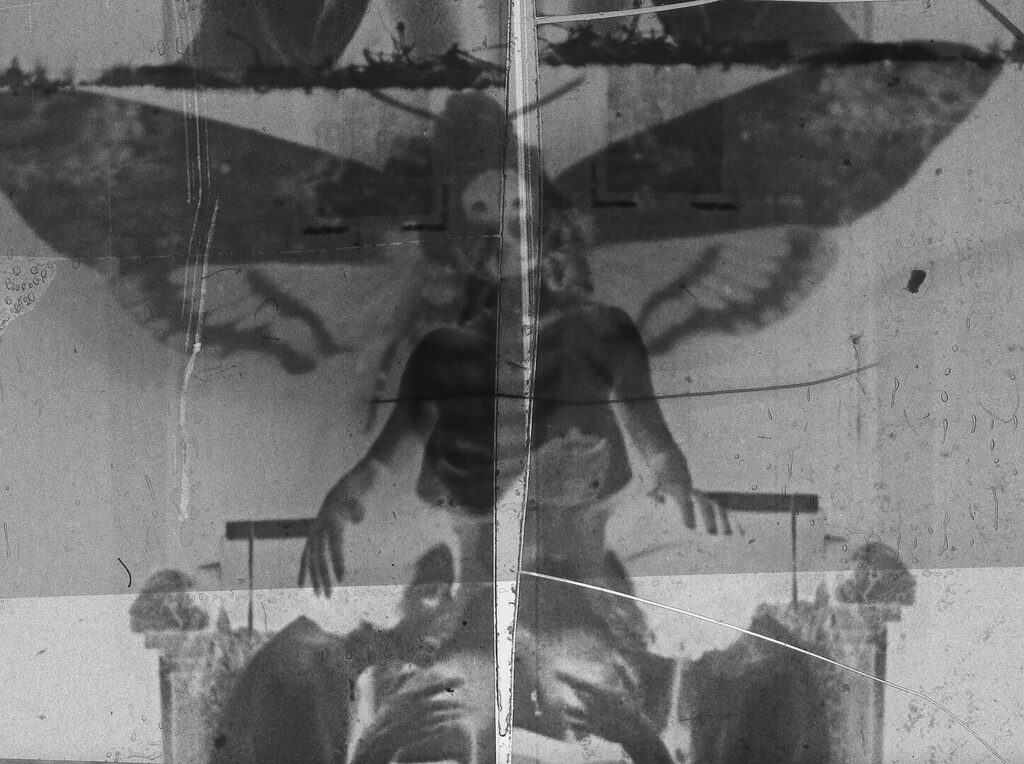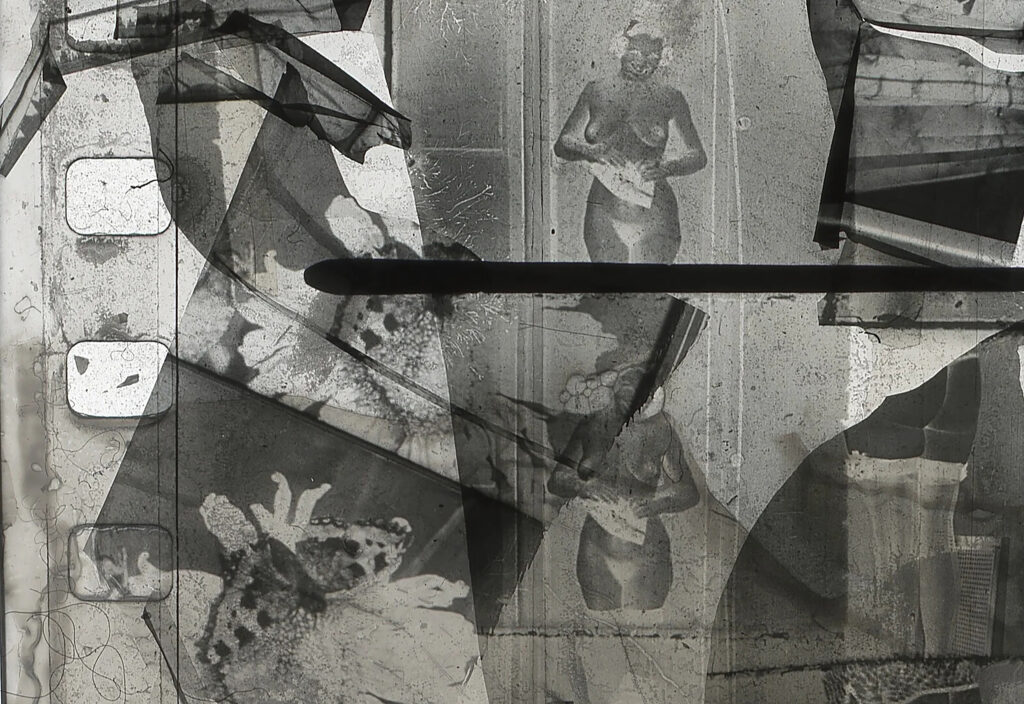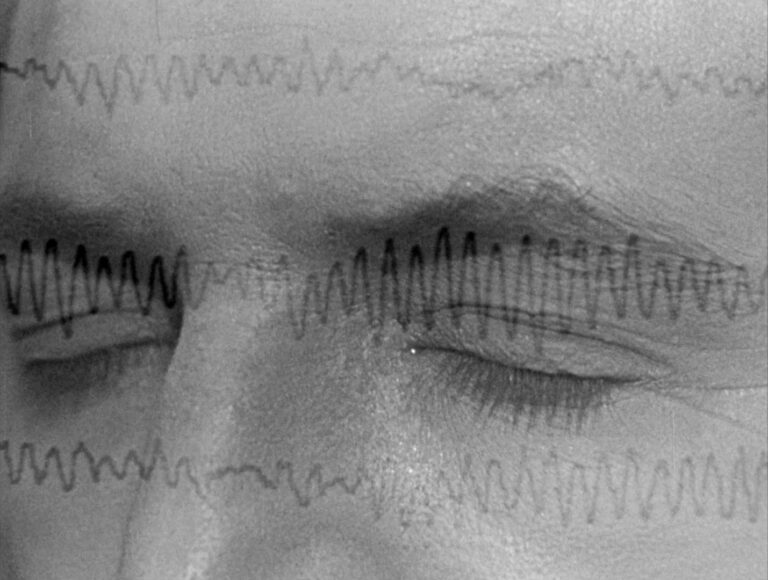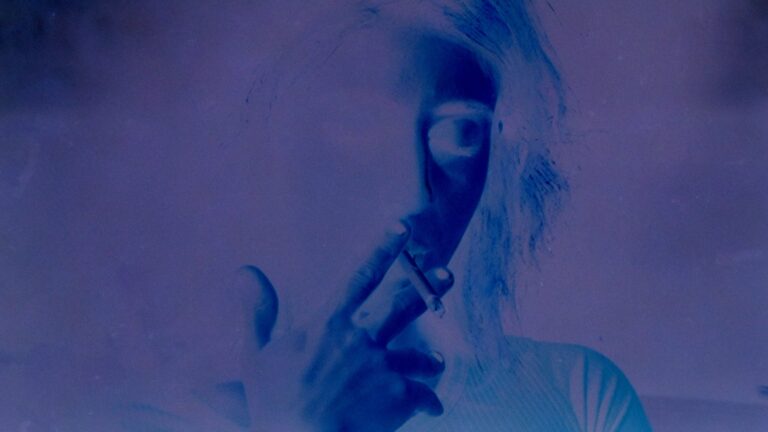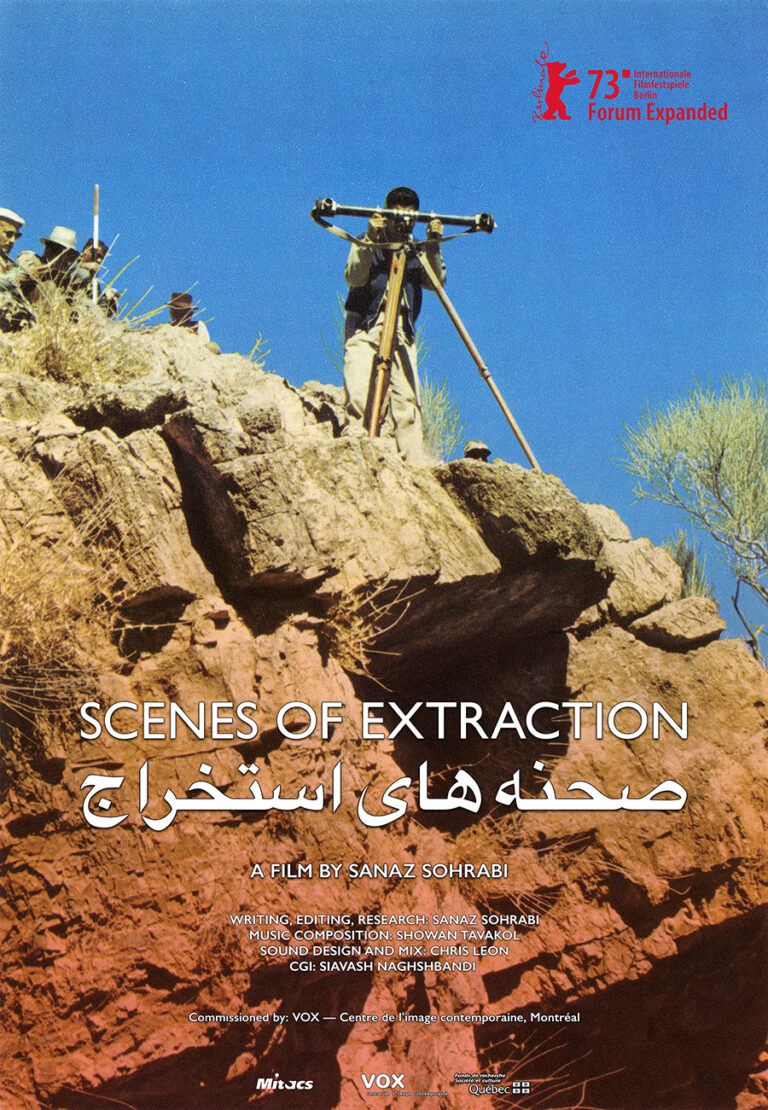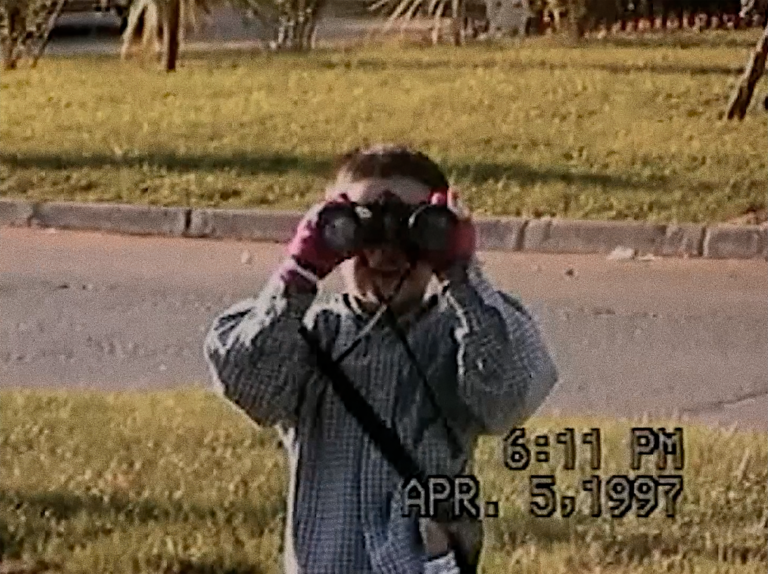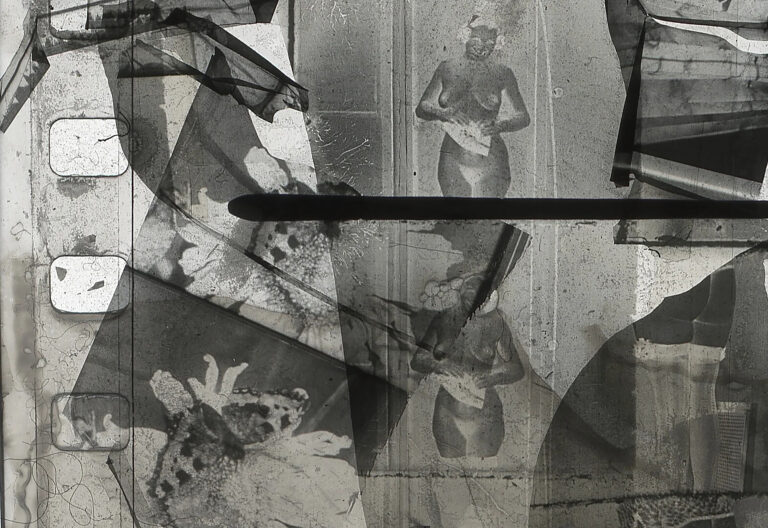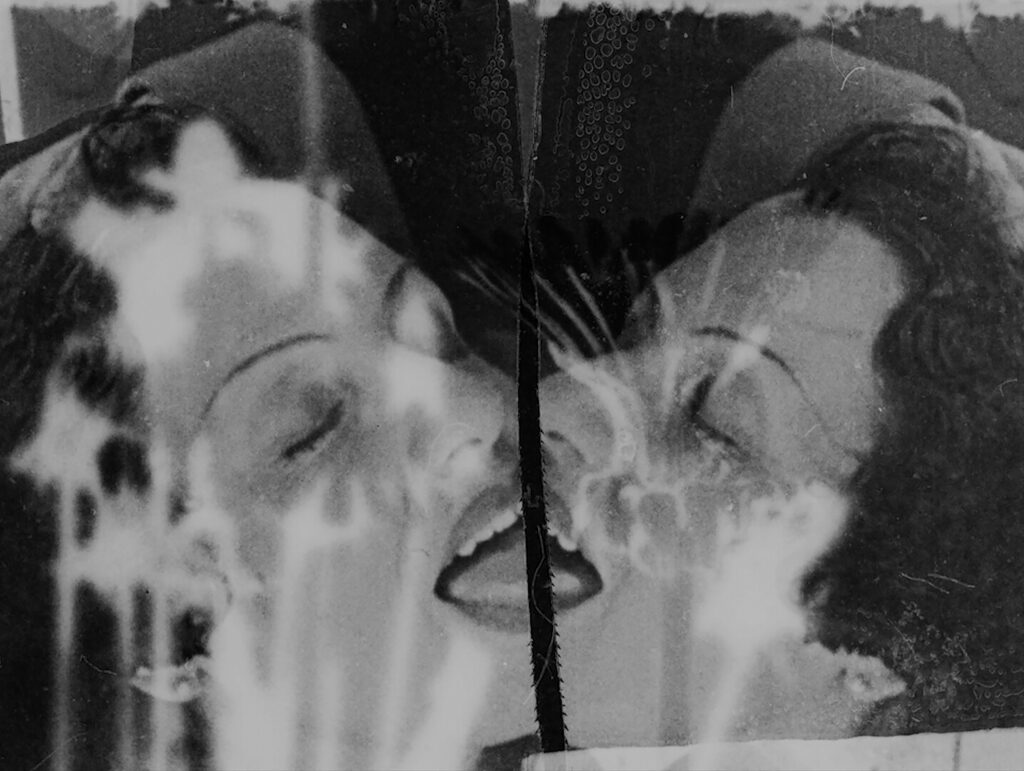
Negative/Positive Film is a handmade film collage composed of layers of 16mm erotic films from the 1940s and 1970s, nature documentaries, and layers of organic materials. The visual abstraction fuses positive film and its negative counterpart on the same polyester base, allowing the film to exist in two versions. The artist uses the technique of Emulsion Grafting or Emulsion Lifting, which makes the film an abstract repatriation of female bodies dislocated from their erotic content and torn from their male co-protagonists, cut out of the image. The female body merges with insects and flowers at the intersection of eco-criticism, decorative art, animation, and sculpture.
«The archival material (in 16mm) was hand-treated with the technique known as Emulsion Lifting, which is the disconnection of celluloid emulsion from the polystyrene base. This analog and artisanal process, very similar to collage, makes it possible to create superimpositions and optical effects by superimposing on various layers, fragments from different films.» – Federica Foglia
Information
Country
Italy, CanadaYear
2023Length
14'
Category
experimentalOrigin of archival materials
Erotic film circa 1970s/80s black and white negative (origin unknown) Erotic film 1939-1940 in black and white negative - French - La Nouvelle Secretaire Nature documentary black and white positive - Le Pissenlit circa 1940/50 France Documentary on the life of butterflies in positive black and white - Le Papillon circa 1950 France/Germany Unidentified black and white positive erotic film - circa 1940 - FranceEditing
Federica FogliaProduction
Federica FogliaSound
Federica FogliaDirector’s biography
Federica Foglia is a visual artist working between Canada and Italy. She holds a Master of Fine Arts degree from York University in Toronto, where she is currently a Cinema & Media Studies PhD student. She is interested in issues of immigration, identity, diaspora women and migrant temporalities. Her practice is within the context of materialist experimental cinema with a particular inclination toward tactile, recycled, amateur, camera-less cinema. Her works have been exhibited, recognized and awarded in various international contexts including museums, galleries and festivals.
Related news
